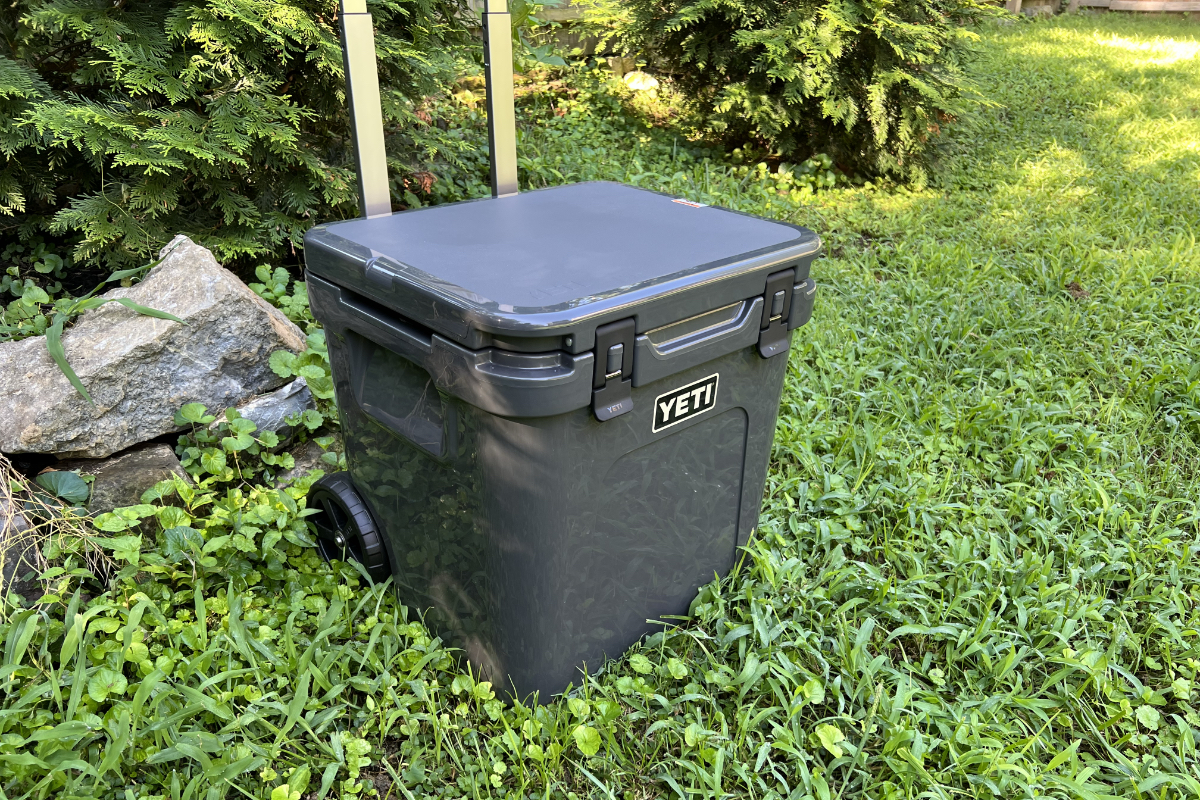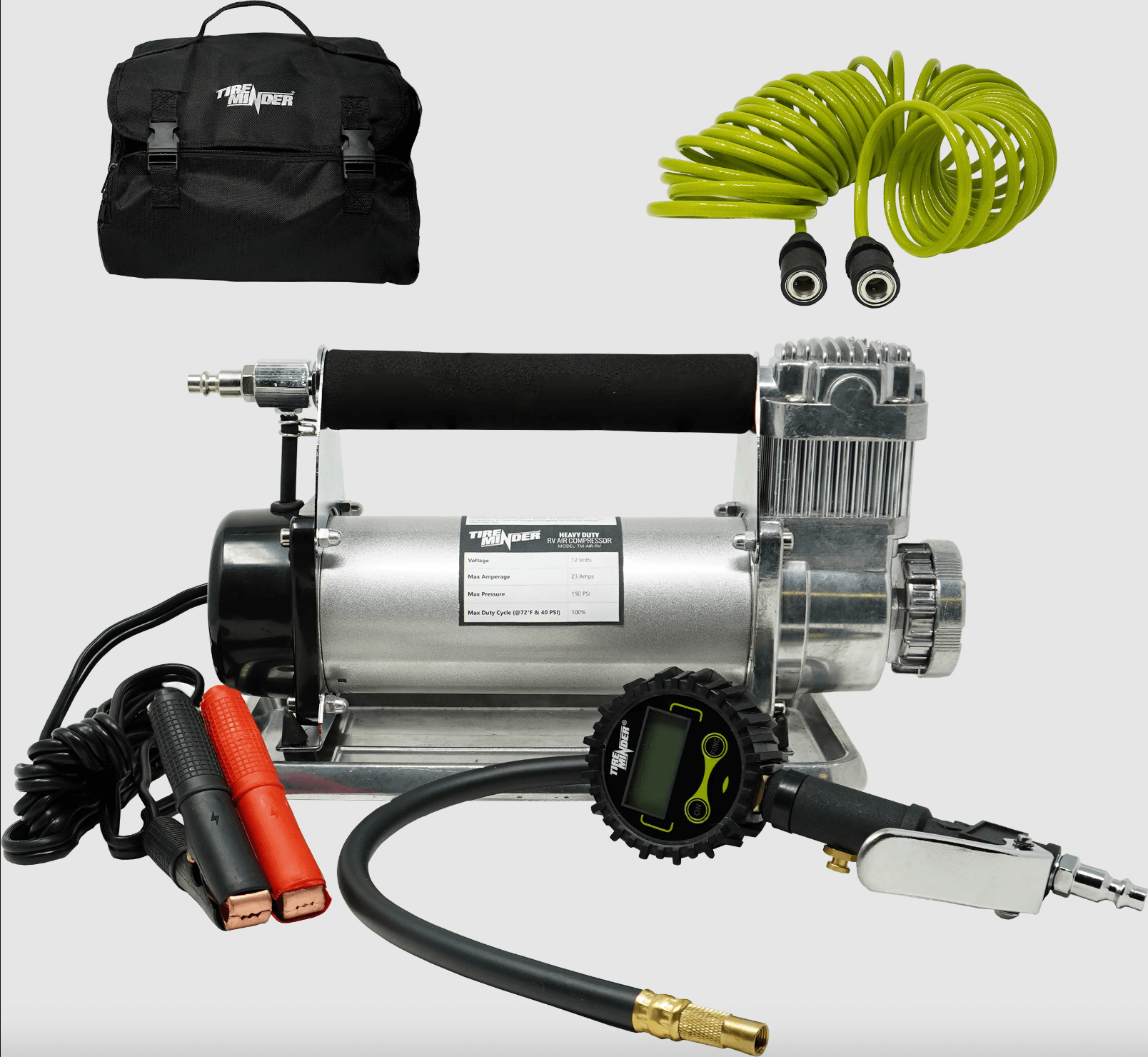Why Tire Pressure Monitors Matter
Image Caption:
It’s easy to know when a tire is underinflated on today’s later-model tow vehicles because a flashing icon on the dash screams out there’s a problem that requires immediate attention. Automatic monitoring of tire pressure has been standard on vehicles sold in the United States since September 2007.
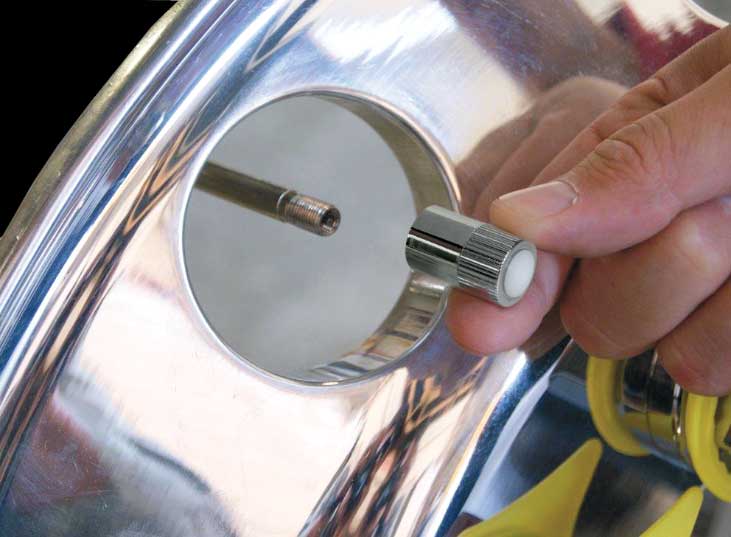
Cap-style TPMS sensors are the least-expensive way to monitor trailer-tire pressures, other than using a handheld gauge. This one from RealWheels replaces the valve-stem cap. It flashes a warning when tire pressure drops 5 to 10 psi lower than when the sensor was initially installed. These are especially good for small trailers.
Having mandated tire-pressure monitoring systems (TPMS) has saved countless lives over the years, not to mention improving fuel economy and reducing operating costs related to running tires at pressures lower than recommended by the vehicle manufacturer. However, that’s not the case when it comes to trailers, where monitoring tire pressure is left up to the owner. That means checking trailer tires before heading out and keeping a close eye on the mirrors for signs of tire problems on the road.
The latter isn’t always easy, especially when towing longer trailers, towing at night and on bad roads, or when weather conditions are on the poor side, making it difficult to see the trailer tires. Running a tire at low pressure as a result of poor maintenance practices, damage or a puncture can result in accelerated tread wear and, more importantly, excessive heat buildup that can lead to ply separation and a blowout. In too many cases, collateral damage, leading to expensive trailer repairs, is the direct result of a tire blowout.
Fortunately, the TPMS industry is aware of safety concerns when it comes to trailer tires. This has resulted in a robust aftermarket of TPMS products that affords trailers the same tire-monitoring benefits as those in the tow vehicle. It’s just a matter of finding a system that fits your needs and budget.
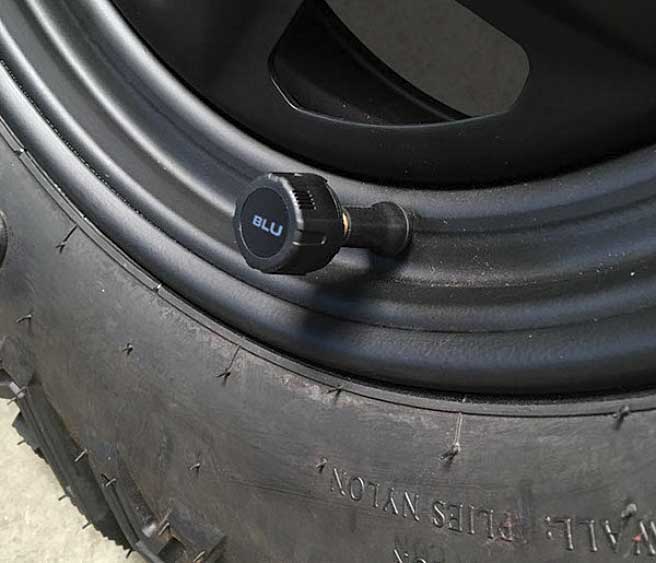
Wireless sensor caps send data to a signal booster, which then broadcasts that constant stream of information to a display monitor located in the cab of the tow vehicle or a smart device. Some TPMS systems can monitor tires on multiple trailers.
TPMS Fundamentals
In the automotive world, there are two types of tire-pressure monitoring systems: direct and indirect. Direct TPMS measures actual air pressure in the tire through a battery-powered sensor mounted to the valve stem or a sensor on the inside of the tire.
Indirect TPMS uses the vehicle’s onboard computer system to compute tire pressure by wheel rpm through input from sensors on the antilock brake system and other parameters, and comparing one tire speed against the others. A tire with lower air pressure is smaller in rolling diameter than one with higher inflation, so the computer “infers” there’s a low-pressure problem because the underinflated tire will consistently roll at a higher rpm.
Regardless of the type of TPMS on the tow vehicle, when the system senses low air pressure through actual or inferred tire pressure, the tire-pressure warning flashes on the dash, and it will remain on until the issue is resolved and the TPMS is reset.
Systems designed for trailers work in much the same way, but all utilize the direct method because there’re no onboard computers involved. When a tire pressure drops below a certain level, the TPMS warns with a visual or audible alert, or both, that there’s an issue.
“It’s important for consumers, especially those that tow, to understand the long list of benefits added by installing a TPMS on trailers,” says Vanessa Hargrave, COO/CMO of Advantage PressurePro, a leading TPMS supplier for towables.
“Providing the data needed to maintain optimal tire pressure isn’t just important for adding fuel efficiency and extending tire life, but also because under- or over-inflated tires have a negative effect on handling, reduce braking ability and increase the chances of experiencing [tire] failure that leads to danger for not just the driver and the occupants but for others on the road,” Hargrave says.
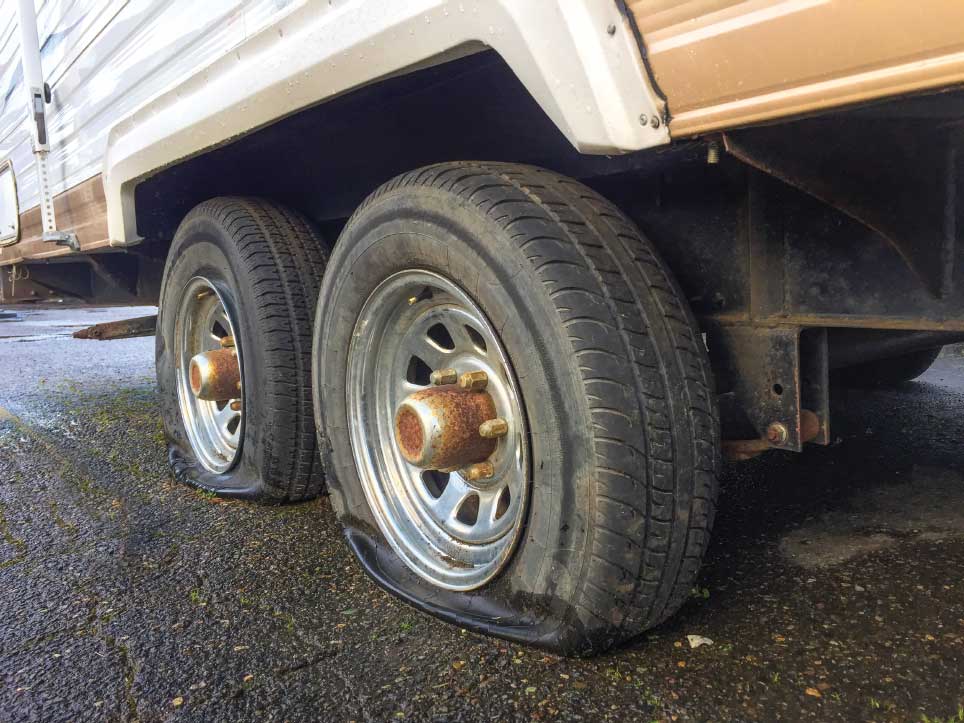
Right: Some TPMS applications monitor trailer tires even when the trailer is not attached to the tow vehicle, which can prevent tire damage caused by the trailer sitting on the rims.
Monitoring Trailer Tires
For trailers, tire-pressure monitors are available in basically two types: flow-through and pressure-cap. Both rely on measuring actual air pressure, as direct TPMS does on the tow vehicle. But aftermarket systems don’t integrate with the vehicle’s system and rely instead on separate sensors and monitors.
The most basic systems for towables have some sort of indicator that replaces the screw-on valve-stem cap. The indicator in the cap lets you “see” when tire pressure is below a preset level, and some light up as a warning. These systems are inexpensive, but even the brightly illuminated ones may not be noticed while in transit.
That’s where the more sophisticated, and more expensive, trailer systems come into play. They employ a traditional battery-powered in-tire-type sensor, but are attached to the valve stem or a flow-through cap attached to the valve or valve stem that broadcasts tire pressure. These types of sensors often transmit internal tire air temperatures as well.
All of the above sensors have a tiny transmitter that sends a constant stream of data via a very weak radio signal to a repeater (or signal booster), which broadcasts the data to a stand-alone monitor on the dash or transmits it to an app on a smartphone or similar device.
Some of the more expensive systems for trailers allow the end user to set low-pressure, high-pressure and high-heat warning levels as needed for that application. But setting those pressure-warning parameters isn’t always as easy asit might seem.
“From an educational standpoint, the sidewall of every tire has the maximum pressure for that tire at a given load,” says Al Cohn, director of product development at Pressure Systems International, parent company of Truck System Technologies (TST), noting that the preferred inflation is based on the actual weight carried by that tire as noted on the tire manufacturer’s load-and-inflation table, if available.
Aftermarket systems for towables operate in a different frequency range (433.92 megahertz in North America) than factory automotive sensors, and with different signal strengths and protocols dictated by the FCC so the two systems won’t interfere with
each other.
“Manufacturers embed unique ID numbers within each sensor,” says TST Vice President Mike Benson. “In our case, you have to physically pair each sensor with a TST display.”
That’s what keeps the TPMS on your vehicle or trailer from picking up the sensors in other vehicles on the road. Another way to understand this concept is to think telephones: each TPMS sensor has its own unique phone number, and the monitor is programmed to take only the constantly streaming phone calls from the sensors mounted on your vehicle or RV.
Worth the Investment?
Is it worth it to invest in a trailer TPMS? That’s a question you can answer by weighing the expense of the system against the safety aspects it offers, along with such things as the potential costs of replacing a damaged trailer tire and rim and repairing collateral damage to the trailer, and the benefits of reduced tire wear and improved handling and
fuel economy.
On the tire side alone, it’s not unusual for a good-quality trailer tire and matching after-market rim to cost between $150 and $300, depending on brand and style, not counting the time lost making the repairs. Catastrophic trailer-tire failures also tend to damage the underside of the trailer, wheel well and body panels, all of which cost far more to repair than replacing a tire and wheel. Then there’s the possibility of the ensuing debris causing damage to vehicles that are sharing the road.
Granted, installing a TPMS on a trailer doesn’t guarantee an end to tire-related problems. But a good system can monitor what’s happening inside each tire in real time and warn the driver when there’s an issue. When it comes to tires, air carries the load, and a TPMS lets you see how well that’s being done.
To give an idea of what’s on the market, we’ve assembled 13 systems that are suitable for towing applications.
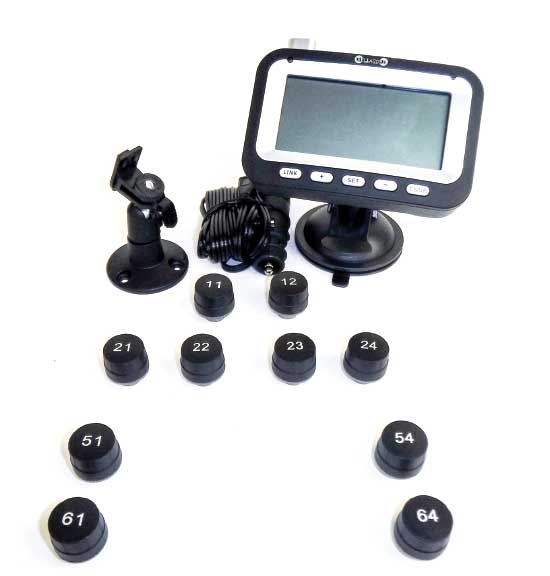
Originally designed for horse trailers, the Bellacorp TPMS monitors any combination of trailer axles and tires running air pressures up to 178 psi. The user sets high-pressure, low-pressure and high-temperature alerts, while the system automatically trips slow- and fast-leak alarms. To install, the user screws on the preprogrammed sensors to the tire stems and turns on the monitor. The kit comes with 10 sensors, a repeater and a signal booster.
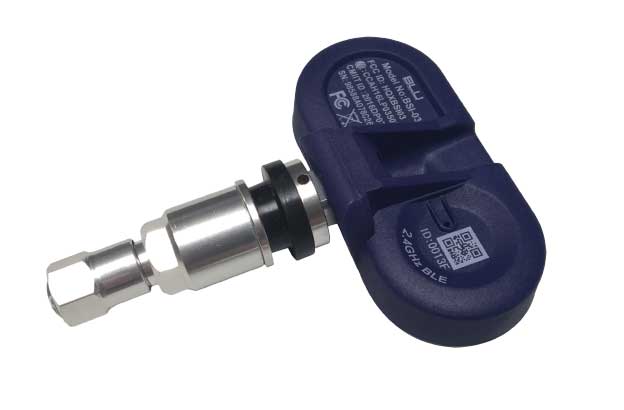
Low-energy Bluetooth sensors are the heart of the Blu TPMS that allows users to monitor pressure and temperature on up to 32 tires from an Android or Apple IOS device. Warnings can be set up to sound through the vehicle’s audio system. Available with external (screw-on) or internal (professionally installed) sensors in two-, four- and six-wheel kits, the TMPS has an optional signal repeater for long vehicles.
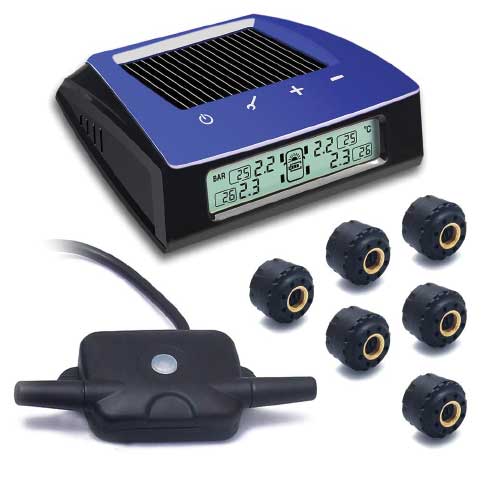
The Carchet TPMS for RV Trailers features screw-on caps that wirelessly transmit pressures and temperatures to a dash-mounted LCD monitor where the data is displayed. The system handles air pressures up to 99 psi (so trailers with bigger wheels need not apply) and temperatures up to 176 degrees on as many as six tires. Visual and audio alarms go off when user-set upper and lower limits are reached.
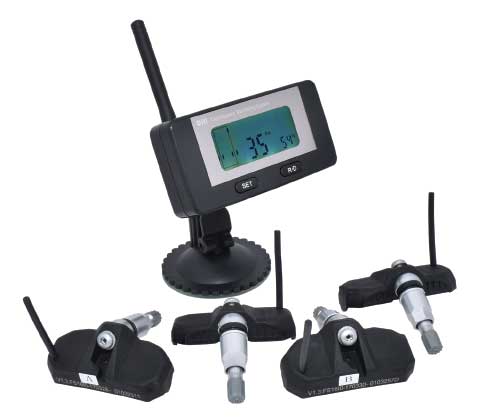
Compatible with 2-, 4-, 6-, 8- and 10-tire applications, the Dill Trailer TPMS allows the user to program a custom baseline air pressure on internal sensors for each tire. The back-lit, dash-mounted display shows pressures up to 188 psi and temperatures from -40 to 257 degrees Fahrenheit. Kits include a 12-volt DC plug-in and a fused hardwire kit.
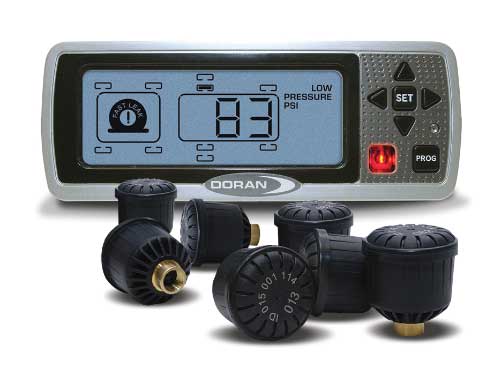
The Doran 360RV provides the driver with updates via the digital LCD monitor, which mounts on a pedestal or clips to the visor. The flow-through-cap system monitors up to 36 tires. Visual and audible alerts are provided through multiple alarms for low pressure, fast leaks and high temperature.
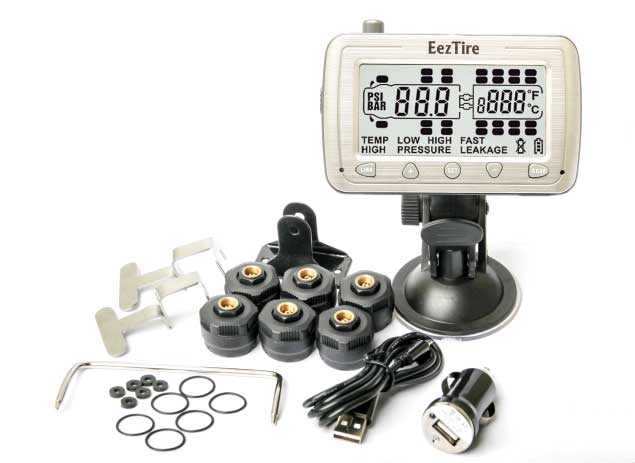
The EEZ RV EEZTire E518 monitors up to 26 tires and pressures up to 210 psi. Sensors screw on in place of the valve-stem cap. If there’s an issue, the monitor flashes the tire position and gives visual and audible alarms. The USB-charged monitor is motion-sensitive and shuts down after 15 minutes when no vibration is detected. Flow-through and anti-theft sensors are available.
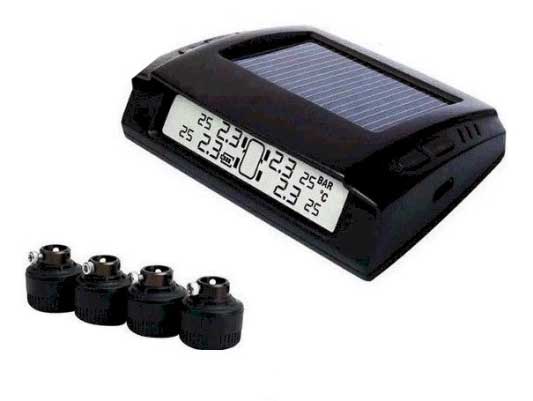
The sun powers the HawksHead Solar Impulse 4 monitor, while four screw-on sensors keep an eye on trailer-tire pressure up to 80 psi. The system comes with a signal booster to extend the sensors’ range for trailers up to 30 feet. The user customizes the monitor’s visual and audible alarm settings to match the trailer’s tires.
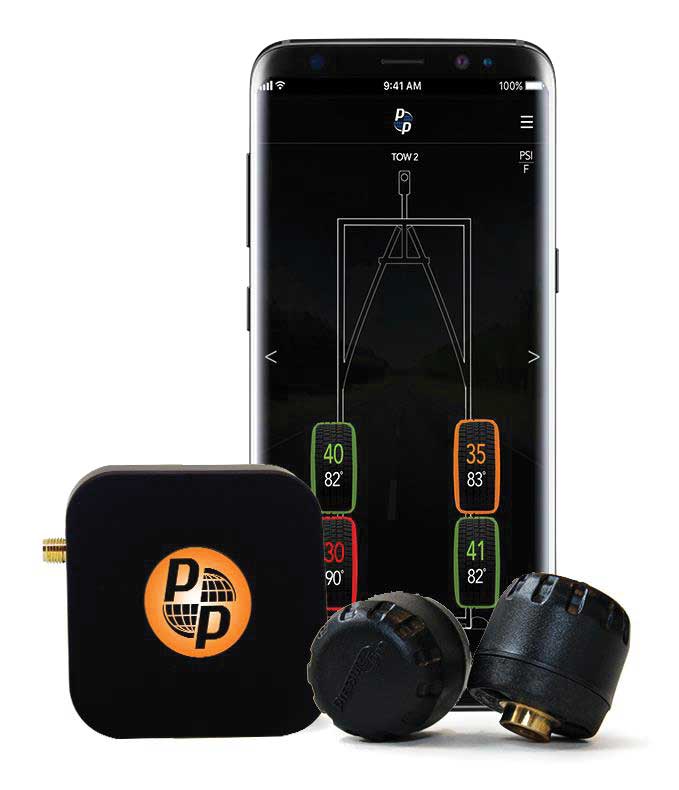
Keeping an eye on trailer tires with the user’s existing smart device, the PressurePro FX provides 24/7 monitoring of pressure up to 280 psi and temperature. It features five different alerts (two low-pressure, high-pressure, high-temperature and cross-axle), and sends data from its screw-on, waterproof sensors.
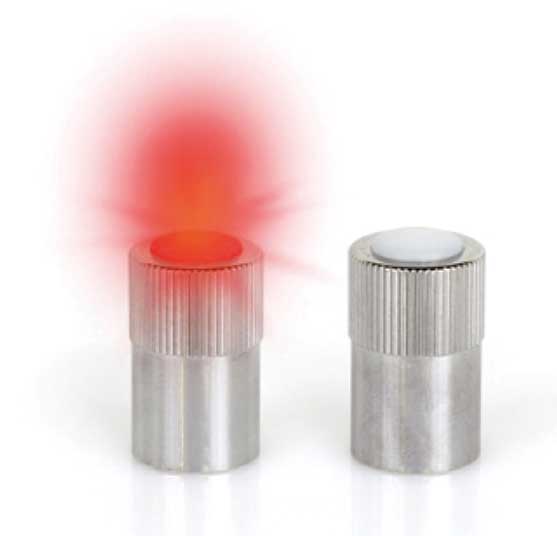
Valve-stem sensors on the RealWheels LED AirGuard Set & Go memorize tire pressure when initially installed and flash bright red if tire pressure drops. Sensors monitor tire pressures up to 180 psi and can be recalibrated by removing and reinstalling. An optional locking system helps keep the sensors from being stolen.
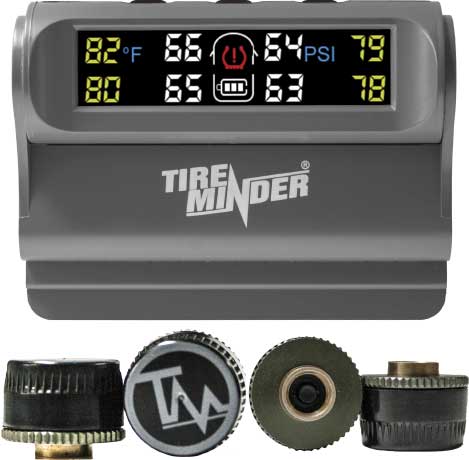
Designed for single- or dual-axle trailers up to 25 feet long running tire pressures up to 70 psi, the TireMinder Trailer TPMS has a solar-powered LCD monitor. The windshield-mounted color display simultaneously shows pressure and temperature readings for up to four tires. The kit includes a hardwired signal booster for maximum distance and reliability of its screw-on sensors.
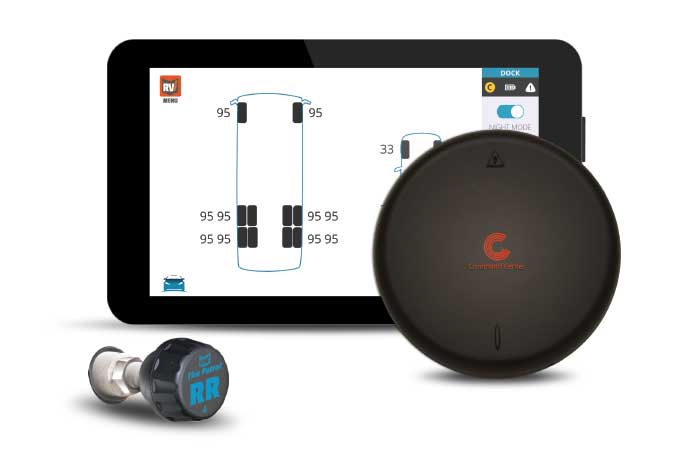
TPMS systems can take 10 to 20 minutes to set up and pair all sensors. RV Innovations’ Tire Patrol TPMS expedites the process with pre-assigned sensors clearly labeled for each tire. The monitoring system comes with a hockey-puck-size Wi-Fi hub that’s mounted in the trailer where it broadcasts the tire data to a 7-inch Command Center tablet mounted in the tow vehicle. Tire Patrol can monitor up to 14 tires on two vehicles, with audible/visual warnings for flats or over-heat situations.
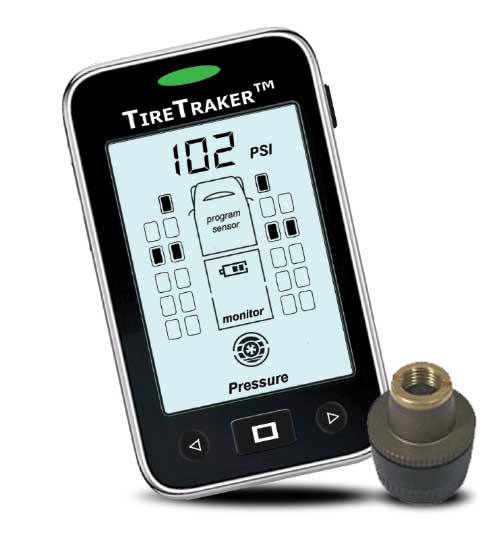
Capable of monitoring up to 22 tires, the TireTraker TT-500 features an easy-to-read display and continuous monitoring of pressure up to 232 psi and temperature with automatic updates. Visual and audible alarms alert to low and high pressure, high temperature and rapid pressure loss.
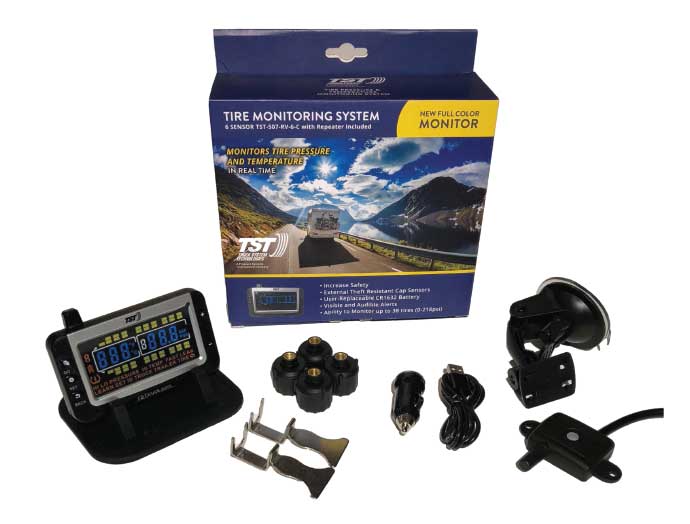
The highly configurable Truck System Technologies 507 Series can monitor up to four towables, plus the tow vehicle, if needed. Several external sensor types are available to suit the application: flow-through for the tow vehicle, caps for RVs and utility trailers, and hybrids for boat trailers. All 507 Series sensors work seamlessly together and are theft-resistant.



